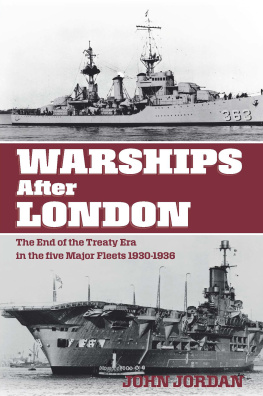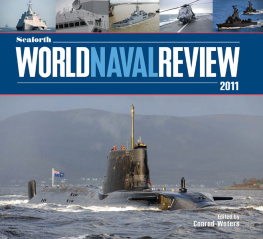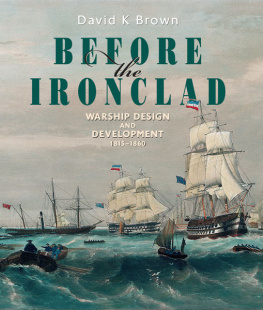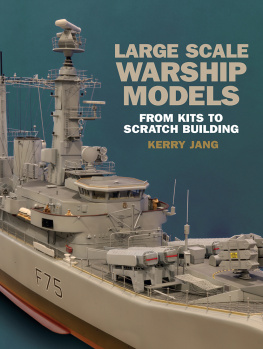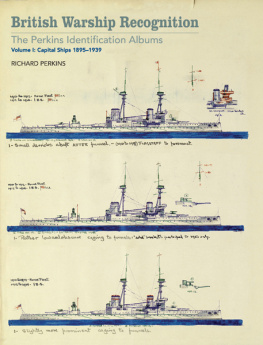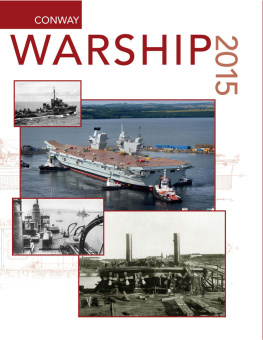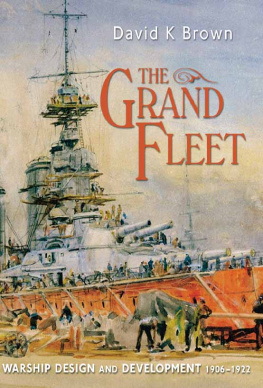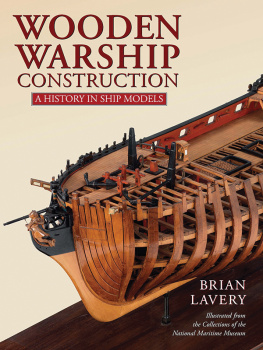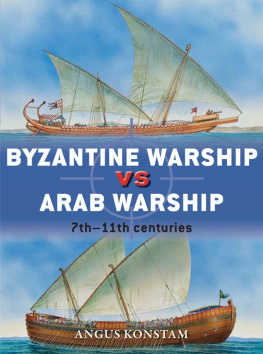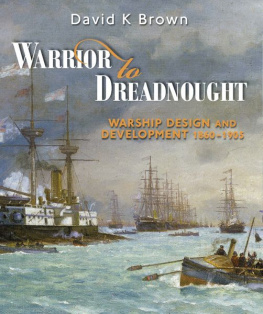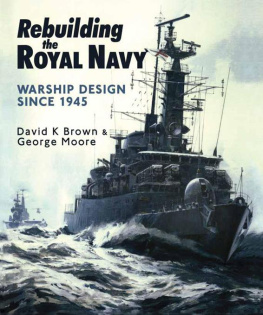
CONTENTS
Kathrin Milanovich investigates the circumstances which dictated the unusual design of Japans first all-big-gun ships, in particular the lack of uniformity in the length in calibres of the 12in main guns.
David Boursnell explores the records of Britains armour plate makers to look for evidence of price fixing, cartels and other collaborations designed to protect profits.
John Jordan describes how Frances first dreadnoughts evolved from the six-ship Danton class, featured in Warship 2013, and in particular at the extent of British influence on the design.
Mark Briggs looks at the failed project to design and build a patrol frigate to Australian specifications in the early 1970s.
Michele Cosentino looks at the early steps of the Regia Marina towards creating a naval aviation capability, and describes the conversion and operation of its first seaplane carrier.
Conrad Waters examines the history of mine warfare at sea from its earliest beginnings to the present day.
Hans Lengerer looks at the conversion of the IJN heavy cruiser Ibuki as a light aircraft carrier following the Battle of Midway.
Peter Marland provides a history of the development of the Royal Navys controversial prewar High Angle Control System (HACS), together with an informed analysis of its strengths and weaknesses.
David Murfin has turned up many of the pieces previously missing from the jigsaw depicting what would have been the last of the Royal Navys 10,000-ton treaty cruisers.
Aidan Dodson reviews the careers and ultimate fates of the Imperial German Navys small force of modern light cruisers after the end of the Great War.
A D Baker III tells the story of the last series of monitors to be built for the US Navy.
Stephen Dent and Ian Johnston present a series of photographs of British battleships during the 1920s.
EDITORIAL
Warship was first published as a quarterly in January 1977, so the current edition effectively marks 40 years of publication. The passage has not been entirely smooth, with a slightly awkward changeover from a quarterly to an annual the Editor still receives the occasional letter or email asking what happened to the second part of two articles begun in Warship 49. There were also occasional missed volumes during the late 1990s, when Conway Maritime Press was taken over by Chrysalis and Warship did not have a settled editorial team. However, in the past twelve years things have stabilised and the annual has grown from strength to strength. Many new contributors have been introduced and new readers acquired.
This years annual sees the first contribution by David Boursnell, who has been conducting research in the archives of the great British armaments manufacturers of the early 20th century. Ian Johnston and Ian Buxton, in their seminal book The Battleship Builders (Seaforth 2013), hinted at a conspiracy on the part of the major companies to keep armour prices high in order to maximise their profits. In his own article, David presents evidence of wide-ranging formal agreements and of financial structures put in place to provide mutual support and ensure that no one company lost out in the tendering process.
The same period saw the changeover from the standard pre-dreadnought battleship, with its slow-firing heavy guns in turrets fore and aft and a secondary battery of quick-firing (QF) guns in casemates amidships, to the all-big-gun battleship. This new development was not met with universal acclaim at the time, and the implications for fire control of mixed batteries of heavy and medium guns were imperfectly understood. Two of this years articles focus on battleships designed during this period of technological change. The Editors article From Danton to Courbet looks at the evolution of French thinking between 1906 and 1909, and the influence of the Royal Navy on the Marine Nationale, not just in terms of the concept of the all-big-gun warship exemplified by HMS Dreadnought, but of associated technological aspects such as turret design and propulsion. This is complemented by Kathrin Milanovichs article on the IJN battleships Kawachi and Settsu, which had a main battery of twelve 12-inch guns and were considered by the Japanese to be dreadnoughts, but which featured guns of two different calibre lengths (45-calibre and 50-calibre). Again, British influence was paramount, but the Japanese failed to grasp fully the fire control implications of having 12-inch guns with different characteristics when engaging at longer ranges. Kathrin explains the financial and technical reasons behind this unusual decision.
The High-Angle Control System (HACS) was the Royals Navys key big-ship anti-aircraft fire control system of the Second World War. Developed during the early/mid-1920s, it aimed to resolve the problem of hitting a fast-moving aerial target operating in three dimensions with time-fused ammunition from a 4-inch gun mounted on a moving platform which was subject to roll and pitch. Following widespread installation in battleships and cruisers, HACS was found wanting against the faster and more manoeuvrable monoplanes which began to enter service in the late 1930s, and has since been compared unfavourably with its more mature US counterpart, the Mk 37. Peter Marlands article looks at the key staging posts of the HACS programme, at the disadvantages incurred by the Navy in committing itself to a major investment at a relatively early stage, and at the patchwork of later modifications made to the system in the light of wartime experience.
Naval procurement policy also comes under the spotlight in Mark Briggs article on the Australian DDL project. Second-line navies with limited budgets are often faced with a difficult decision between costly local design and construction, and cheaper off-the-shelf designs purchased abroad, providing more bang per buck. (Even the once-mighty Royal Navy recently opted to purchase a new class of replenishment oilers from South Korean shipyards.) The Australian DDL was eventually cancelled on the grounds of escalating costs in favour of the US Navys patrol frigate (FFG-52). Two of the four ships were built in Australia, but an embryonic indigenous design capability was lost and, in an ironic twist, the patrol frigate programme ended up costing more than the original DDL project.
The aversion of the Italian military establishment, including the Regia Marina, to commit to aircraft carriers between the wars has been well documented in this annual (see Michele Cosentino in Warship 2015 and Vincent OHara & Enrico Cernuschi in Warship 2007) and in other publications. However, as Michele Cosentino points out in his article From Elba to Europa, Italian developments in naval aviation during the First World War were on a par with those of other European navies. Micheles present study focuses on the seaplane carrier Europa, converted from a merchantman, which had a number of interesting and innovative features.
Of the major navies, only the Royal Navy and the Imperial German Navy fully committed to the development of light fleet cruisers to scout for the battle fleet prior to and during the First World War. The German ships were much admired, and were coveted by navies such as the French Marine Nationale, which ended the war without a single ship of this type in service. Aidan Dodson, whose book on the Imperial German Navy has recently been published by Seaforth, recounts the scramble to acquire these ships by other European powers in the wake of Germanys defeat, and Germanys desperate efforts to retain what it could. Many of these ships, including some quite elderly vessels, had extensive careers between the wars, with some even surviving into the Second World War, and Aidan gives a full account of their service and the modifications they underwent.
Next page

